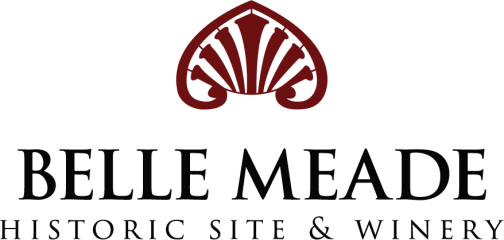Horses at Belle Meade
Belle Meade Plantation is a national leader among historic properties in the United States and we need only to look to the equine operations of the past to understand Belle Meade’s significance on the American scene.
Bloodline Legacy
During the 19th century, Tennessee was near the center of American thoroughbred racing and breeding; it was a proud southern extension of Kentucky’s premier horse industry. Through three generations of the Harding/Jackson family, Belle Meade became the preeminent stud farm and nursery for the American Thoroughbred industry. While the farm did not continue past 1904, the bloodlines established at Belle Meade through Bonnie Scotland and other famous stud horses continues a legacy of speed and endurance that still dominates the Thoroughbred racing scene today.
John Harding established the farm in 1807. As a Virginian, he had a passion for Thoroughbreds and immediately began stabling horses. In 1816, Boaster became the first sire to stand at the stable on the “old Natchez Road.” Harding served as president of the Nashville Jockey Club and in 1823 registered the maroon racing silks of Belle Meade. However, it would be up to his son, William Giles Harding, to make Belle Meade world renowned as a Thoroughbred stud farm through “blood horses” and the science of selective breeding.
After taking over the operation of Belle Meade for his father in 1839, William Giles wrote a letter to the editor of the American Turf Register. In it he said, “Blood stock here is all the go. To be without it is to be out of fashion, and destitute of taste. So I too have procured a little of the real grit, which by-and-by I hope to increase.” And increase he did. Unlike his father, William Giles was more interested in improving the blood stock of Thoroughbreds than in racing itself.
Making a Premier Stud Farm
William Giles saw racing as a means for properly selecting horses (sire and dam) to produce a quality Thoroughbred. This philosophy proved successful. By 1860, William Giles Harding was considered as having the largest collection of silver trophies and cups of anyone in America. The quality of the stallions standing at stud and the mares used for breeding made the annual yearling sale highly sought after. Starting in 1867, this annual sale attracted the most prominent horsemen of the day from across the country.
William Giles had many successful studs, starting with Epsilon in 1844. However, the success of the annual yearling sales, starting in 1867 were from sires like Jack Malone (1867-1872), Vandal (1870-1872), Bonnie Scotland (1873-1879), Great Tom (1879-1899), Enquirer (1880-1895), Bramble (1882-1891) and Luke Blackburn (1883-1904). Modern racing is still dominated by the bloodlines sired by Bonnie Scotland and Enquirer, thus establishing William Giles legacy as one of America’s most successful breeders.
By 1883 William Giles Harding had passed the operation of the farm and one-third interest in the blood horses to his son-in-law, William Hicks “Billy” Jackson. The remaining interest went to his son John Harding, Jr. and second son-in-law, Howell E. Jackson. Billy Jackson operated the farm with his brother and brother-in-law as partners, until William Giles Harding’s death in 1886. Billy and Howell then bought John Harding’s interest in the Blood Horse Department in 1889. After this, Billy secured complete interest from Howell in 1890 through a dispersal sale.
International Fame
Billy Jackson had a flair for marketing Belle Meade’s image as the finest horse-breeding establishment in America. Through annual sales at Belle Meade and in New York, and the acquisition of a world famous Thoroughbred, Iroquois. In 1881 Iroquois had been the first American bred and born horse to win the English Derby. Jackson brought Belle Meade international fame by purchasing Iroquois in 1886 to stand at stud. This fame led Jackson to demand a remarkable $2,500 stud fee for Iroquois service by 1892. When Iroquois died at Belle Meade on December 17, 1899, he was still considered the most famous Thoroughbred of the time.
Jackson continued the precedent set by Harding and conducted yearling sales at Belle Meade from 1886 to 1888. However, in 1889 Billy began selling yearlings in New York as well. Jackson’s most successful year of sales was in 1892, with 53 yearlings selling in New York for $110,050. At an average of $2,076 it would be the best prices the farm had ever received. Unfortunately, the next year the nation experienced a financial crisis and depression that continued throughout the decade. At the same time evangelical reform movements in Tennessee resulted in the closure of racetracks and eventually outlawed gambling by 1907. These economic and social conditions, coupled with competition from horse breeders in other states, were too much for Belle Meade and other Thoroughbred breeding farms in Tennessee to over come. Tennessee Thoroughbred farms closed and the horses were sold at dispersal sales, including Belle Meade.
A Lasting Legacy
Reduction sales for Belle Meade began in 1898, at the urging of Billy’s son William Harding Jackson, Jr. in order to streamline the operation. The 1902 horse sale and auction at Belle Meade brought in $172,665 and was considered to be the most successful sale of Thoroughbred horses ever held in America, but it was too late to offset mounting debt. William Hicks Jackson died in March 1903, and a few months later his son William Harding Jackson died, before realizing an opportunity to manage the farm full time. His young widow, Annie Davis Jackson, held several more dispersal sales in 1903 and 1904. The Thoroughbred stud farm that the Philadelphia Record called “the most remarkable breeding establishment in the world,” closed after almost a century of unparalleled growth and success.
Belle Meade’s legacy as a world-renowned Thoroughbred farm continues today, due to the bloodlines sired during an illustrious past. Telling this history with the many voices of the people that contributed to the intricate weaving of the story of Belle Meade is one of the steps in piecing together the fabric of the multiple garments that make up the American scene.

